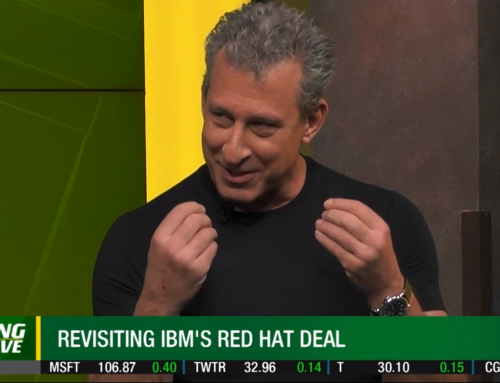Understanding FinTech #Transformation:
In this SECOND of a five part video blog series Jim Jockle, CMO of Numerix sits down with Paul Rowady, Director of Research at Alphacution to discuss the concept of #Transformation. Jim and Paul provide their perspectives on the latest examples of transformation they’re observing in the financial services industry specifically around the cross section of IT spending trends, software vs hardware investment, human capital expense, IT infrastructure, data management and risk analytics innovations. The five segments cover:
- Defining #Transformation within Financial Services
- Quantifying #Transformation
- The Cost of #Transformation
- #Transformation and TCO: Hewlett Packard Enterprise & Deutsche Bank Case Study
- Investing in #Transformation: What’s the ROI?
Video 2: Quantifying #Transformation
Jim: Hi welcome to the Numerix Video Blog I’m your host Jim Jockle. Joining me today continuing our conversation “Quantifying Transformation” Paul Rowady, director of research at Alphacution. Paul, welcome back.
Paul: Thank you Jim.
Jim: We started the conversation as it relates to the definitions of transformations and some of the work you’re been doing – thinking about how to quantify that. Interesting –at JPM Chase highlighted its commitment to technology in its annual investor briefing a couple weeks ago citing a 9 billion dollar tech budget with almost one third of that being dedicated to investments in other technologies. In terms of – you know obviously we saw in the Journal JPM too big not to fail but what are other institutions doing or how are they thinking about this as they are going through their own tech transformation?
Paul: Well I’d say in one case JPM would be one of the leaders in terms of the mega big banks that have somewhere in the neighborhood of 250,000 employees so they are among a small set of global leaders, global leaders that have the full spectrum, financial super market that has cultural gotten to this point where they are a step or two ahead in terms of integrating having contiguous or organized back bone that allows them to launch products into different business segments. And then at the other end of the spectrum you have the laggards that are still trying to figure out how to make decisions and I think that comes down to the bet I’m making and research we’re doing at Alphacution – it’s that you need better tools measuring what you spend what are the spending patterns, how does that impact your decision making, could you use this output and these analytics to make better decisions or to compare yourself or benchmark yourself against some of your other peers.
Jim: So some of the costs are obviously human capital, ballooning hardware costs, software costs, as well as the investments. In terms of that breakdown what are some of trends inside some the institutions you’re looking at?
Paul: Yeah so I would say we are just on the verge of releasing some new research here in the next month or so hopefully early May where we are taking our existing composite model which currently includes 58 of the largest banks in the world all the GSIBs all the primary dealers. Most of the top 50 banks and a few of the top 100, the second 50 were coming up, we actually getting estimates – the human capital that’s dedicated to IT because more and more banks are creating what you would call an infrastructure segment where they report financials, or what they call maybe a corporate center that includes all of their enterprise risk which you know all about, their enterprise operations, this layer that is more horizontal as opposed to the verticals of the different wholesale banking side, retail banking side, the insurance and the wealth management.
So what we’re seeing in terms of the trends in your questions software has been the most high growth area of that triumvirate if you’re looking at that human capital piece, the hardware piece, the software piece. The software is unique because it’s got a lot of capitalized, human capital – it’s really a human capital expense, but a human capital cost that is amortized and that you can capitalize. That piece has been growing the most relative to the others because of regulatory drivers there being no off the shelf solution for an enterprise GRC, enterprise governance, enterprise reporting.
That’s most notable, and I think a secondary thing that is therefore the crowding out of hardware spend which causes almost by default an unintended tipping point into infrastructure, new infrastructure as a service, because if your budgets are relatively inelastic and more of it is sucked up in software development expenses that leaves less for infrastructure which forces you to try to adopt cloud and other hybrid, IAAS even faster than you might otherwise because you have to do the software, you have to do the reporting.
Jim: Thank you Paul and we’re going to continue this conversation in just a few minutes.



